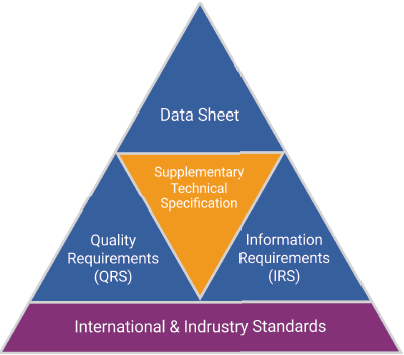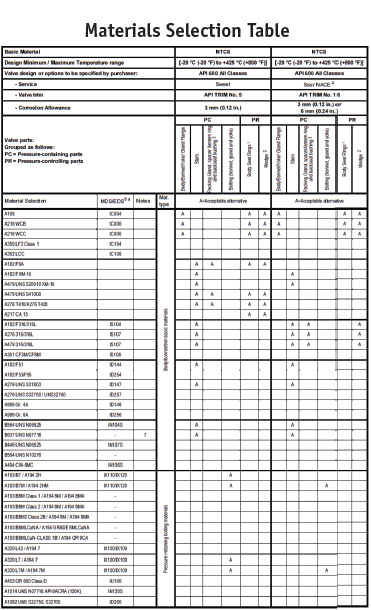The International Association of Oil & Gas Producers (IOGP) functions as a global advocate for the petroleum industry and holds a leading position in promoting secure, efficient, and sustainable energy provision. In close partnership with a diverse membership, IOGP actively contributes to the transition towards a low-carbon future.
By Foster Voelker II, Jr. Business Development Manager – Williams Valve Corporation
IOGP, established in 1974 in London, has a primary mission to facilitate communication and collaboration among members within the petroleum industry. This membership encompasses leading publicly traded, private, and state-owned oil & gas companies, along with oil & gas associations and major upstream service providers.
IOGP operates as a platform where industry experts identify and exchange best practices across various critical areas, including health, safety, environmental protection, security, social responsibility, engineering, and operations. Through these initiatives, the association strives to drive improvements in the oil & gas sector.
With its diverse membership base, IOGP plays a substantial role in shaping industry standards and practices. The association asserts that its members collectively account for 40% of global oil & gas production. Leveraging nearly five decades of operational experience, IOGP serves as a pivotal platform for disseminating knowledge and best practices in essential domains such as safety, health, environmental stewardship, engineering, and, more recently, addressing industry and energy transformations.1
Engineering Leadership Council & JIP33
In 2016, IOGP established the Engineering Leadership Council and initiated Joint Industry Programme 33 (JIP33) – Standardizing Procurement Specifications. The Engineering Leadership Council is a permanent advisory body reporting to the IOGP Management Committee and bringing together the heads of engineering from the 12 funding members of JIP33 to drive a collaborative engineering agenda.
According to the IOGP 2023 Annual Report, JIP33 is an initiative established by IOGP in 2016 with support from the World Economic Forum. Its primary aim is to streamline supply chains in the oil & gas industry to enhance cost-effectiveness, and adherence to schedules, quality, and safety standards. Historically, the industry faced challenges with project budgets and timelines, with many exceeding budgets by 50% and delaying completion dates by 40% due to diverse and complex procurement requirements.

JIP33 addresses this complexity by providing a standardized approach for common transactions. It combines international industry standards, technical information, quality specifications, and procurement datasheets, creating a minimum set of equipment specifications that meet buyers’ functional needs. Over 50 such specifications have been published so far, leading to significant benefits across the industry, including potential savings of up to 20%-25% in cost and schedule and a 30% reduction in engineering hours. The industry has recognized the value of JIP33 specifications, with over 80,000 downloads in 2022. As companies adopt these specifications, IOGP is also producing JIP33 implementation guides to assist them in the process.3
As mentioned, the JIP33 standardized procurement specifications have a repetitive document structure consisting of four documents: datasheet, supplementary technical specification, quality requirements, and information requirements. These documents work in conjunction with the purchase order scope to define the overall technical specification for procurement.
IOGP S-611 vs API 600
Within the domestic context, the most widely adopted and utilized valve specification in the refining sector is API 600: Steel Gate Valves – Flanged and Butt-welding Ends, Bolted Bonnets. In May 2019, JIP33 published IOGP S-611 Supplementary Requirements to API 600 Steel Gate Valves and to API 603 CRA Gate Valves. According to the introduction, “The purpose of this specification is to define a minimum common set of supplementary requirements for the specification for the procurement of Gate Valves to API Standard 600, Thirteenth Edition 2015, and API Standard 603, Ninth Edition 2018, for application in the petroleum and natural gas industries.”4 As previously mentioned, this specification is intended to work in conjunction with related specifications: IOGP S-611L: Information requirements (IRS) for Steel and CRA Gate Valves and IOGP S-611Q: Quality requirements (QRS) for Steel and CRA Gate Valves.
IOGP S-611 introduces modifications to API 600 by adding to, replacing, or removing specific sections and requirements. These alterations, and the implications thereof, are rather significant. The revised scope of S-611 encompasses several key adjustments, notably disallowing double disc gates and parallel seating designs while permitting graphitic seating surfaces and expanding the size range to 48 inches. Furthermore, the scope of S-611 specifically excludes split wedges, pressure seal bonnets, cryogenic valves, and buried valves. The S-611 specification also includes more extensive reference and definition sections.
A comprehensive examination of the design requirements within the design section highlights notable deviations from the standard API 600 gate valves commonly used in the industry. Additions encompass, but are not limited to, specific details regarding internal cavity relief design, the prohibition of weld-on flange configurations, constraints on flange and bolt hole alignment, chemical limits for sulfur and phosphorus in weld-end valves, and specifics to accommodate the increased scope of sizes.

Additionally, it provides guidance on numerous other design aspects that are a departure from the parent document such as additional torque requirements for bonnet flanges, restrictions on bonnet and gasket designs as determined by pressure class, considerations related to driving train stress, limitations on wedge design based on size (in addition to the wedge exclusions outlined within the scope), stem and stuffing box design, packing material qualification, requirements for operators and chain wheels, and so on.

Furthermore, the section addresses topics not found in API 600 such as lagging extensions, criteria for lifting and rigging, pup piece design guidance, fire, and fugitive emission testing in compliance with the relevant ISO standards, and Section VIII compliance for pressure controlling components that fall outside the purview of the design section itself.
Similarly, additional deviations can be found in the remainder of the document. Material selections are restricted to those outlined in Annex D of IOGP S-611. This annex provides a list of suitable and optional component materials for various fundamental metals, which include standard carbon steel (Figure 3), low-temperature carbon steel (LTCS), low-temperature carbon steel with clad- ding, 316 austenitic stainless steel, and ferritic/austenitic stainless-steel types 22Cr duplex and 25Cr super duplex. These materials must adhere to the specifications laid out in IOGP S-563, as referenced in Table D.1.
Another departure from the parent document that could have wide-sweeping implications is the requirements placed on graphitic seals. In recent years, the US Environmental Protection Agency (EPA) has continually negotiated Consent Decrees (CD) with refining facilities requiring them to install Certified Low Leaking Valves and Packing Technology (CLLT) which typically require both valves and packing to remain at leakage levels be- low 100 ppm for five years, backed up by an industry accepted test. This led to the development of API 622: Type Testing of Process Valve Packing for Fugitive Emissions and API 624: Type Testing of Process Valve Packing for Fugitive Emissions.
Adherence to these fugitive emissions specifications was made mandatory for API 600-compliant valves in 2015. Likewise, S-611 places emphasis on ensuring the quality of graphite materials. This is evident through the inclusion of Annex E and Annex F, which cover Graphitic Sealing Material (Amendments to ASTM F2168) and Packing Material, Graphite, and Carbon Braided Yarn (Amendments to ASTM F2191/F2191M), respectively.
S-611 also requires qualification to ISO 15848-1. However, this represents a notable departure from the requirements stipulated in API 600 and its subsequent packing-related specifications, API 624 and API 622. The methodology for assessing weight loss, corrosion inhibitor requirements, allowable chloride con- tent, as well as many other graphitic test metrics differ and may present challenges for packing manufacturers to simultaneously comply with both requirements.
Conclusion
The extent to which IOGP S-611 will be embraced and implemented within the refining sector, and whether it will effectively address project cost overruns as intended, remains uncertain. Unlike the midstream and upstream markets, the refining sector already offers highly standardized commodity products through specifications like API 600. This intrinsic standardization in the refining sector makes the widespread adoption of IOGP specifications more challenging compared to other markets that lack standardization.
One initial concern expressed by certain valve manufacturers who have received requests for quotations (RFQs) referencing IOGP S-611 is the partial application of its requirements, which can vary among users, resulting in different production requirements. Consequently, in practice, what was intended to standardize valve design can paradoxically result in non-standardization in the pursuit of standardization. A new iteration of IOGP S-611 is currently under development which may address some of the challenges inherent to the refining sector.
References:
- https://www.iogp.org/about-us/
- https://www.iogp.org/about-us/structure-and- governance/our-committees/
- IOGP Annual Report 2023
- Specification S-611 Supplementary Requirements to API 600 Steel Gate Valves and to API 603 CRA Gate Valves



